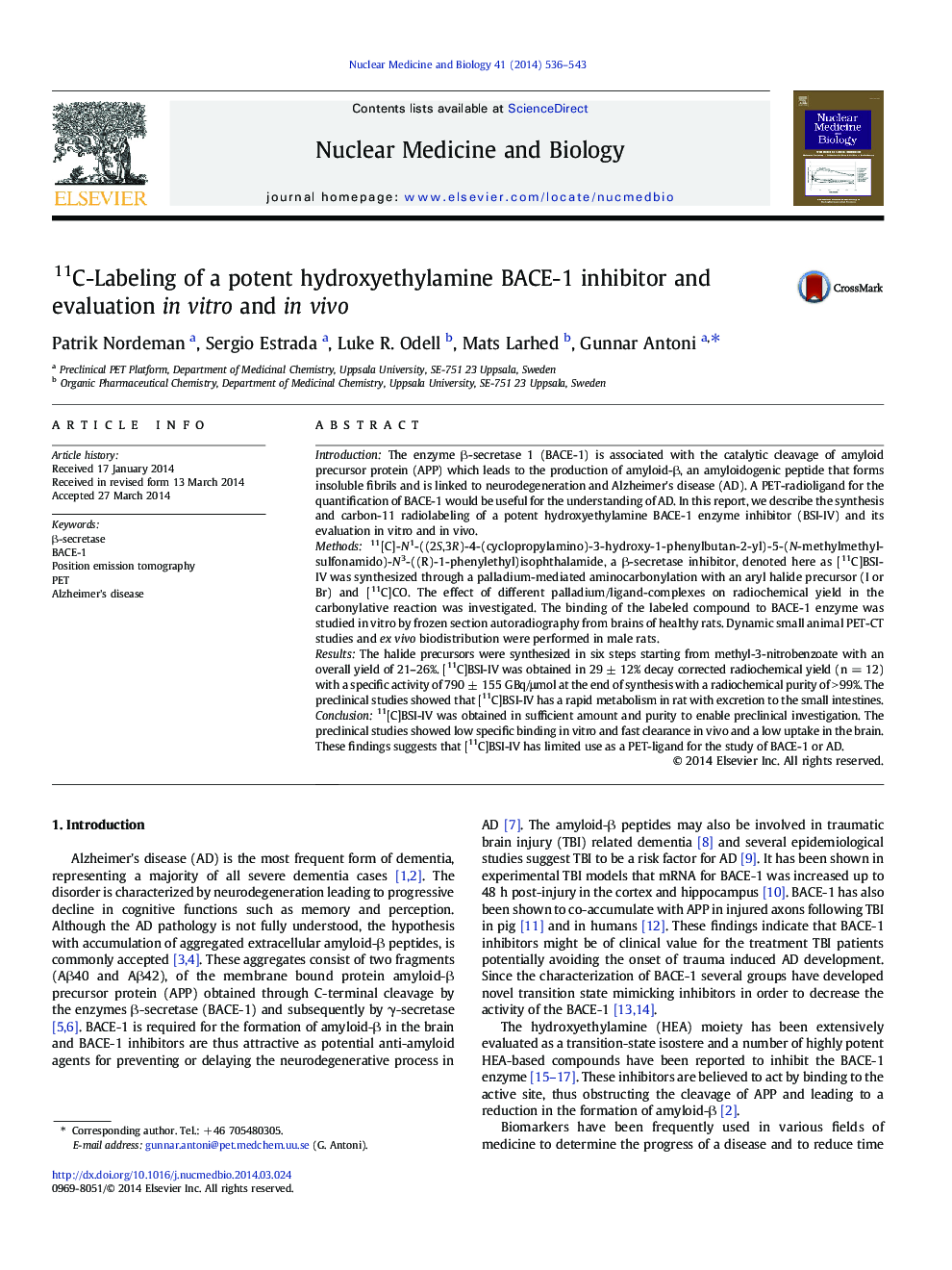| Article ID | Journal | Published Year | Pages | File Type |
|---|---|---|---|---|
| 2153636 | Nuclear Medicine and Biology | 2014 | 8 Pages |
IntroductionThe enzyme β-secretase 1 (BACE-1) is associated with the catalytic cleavage of amyloid precursor protein (APP) which leads to the production of amyloid-β, an amyloidogenic peptide that forms insoluble fibrils and is linked to neurodegeneration and Alzheimer's disease (AD). A PET-radioligand for the quantification of BACE-1 would be useful for the understanding of AD. In this report, we describe the synthesis and carbon-11 radiolabeling of a potent hydroxyethylamine BACE-1 enzyme inhibitor (BSI-IV) and its evaluation in vitro and in vivo.Methods11[C]-N1-((2S,3R)-4-(cyclopropylamino)-3-hydroxy-1-phenylbutan-2-yl)-5-(N-methylmethyl-sulfonamido)-N3-((R)-1-phenylethyl)isophthalamide, a β-secretase inhibitor, denoted here as [11C]BSI-IV was synthesized through a palladium-mediated aminocarbonylation with an aryl halide precursor (I or Br) and [11C]CO. The effect of different palladium/ligand-complexes on radiochemical yield in the carbonylative reaction was investigated. The binding of the labeled compound to BACE-1 enzyme was studied in vitro by frozen section autoradiography from brains of healthy rats. Dynamic small animal PET-CT studies and ex vivo biodistribution were performed in male rats.ResultsThe halide precursors were synthesized in six steps starting from methyl-3-nitrobenzoate with an overall yield of 21–26%. [11C]BSI-IV was obtained in 29 ± 12% decay corrected radiochemical yield (n = 12) with a specific activity of 790 ± 155 GBq/μmol at the end of synthesis with a radiochemical purity of > 99%. The preclinical studies showed that [11C]BSI-IV has a rapid metabolism in rat with excretion to the small intestines.Conclusion11[C]BSI-IV was obtained in sufficient amount and purity to enable preclinical investigation. The preclinical studies showed low specific binding in vitro and fast clearance in vivo and a low uptake in the brain. These findings suggests that [11C]BSI-IV has limited use as a PET-ligand for the study of BACE-1 or AD.
